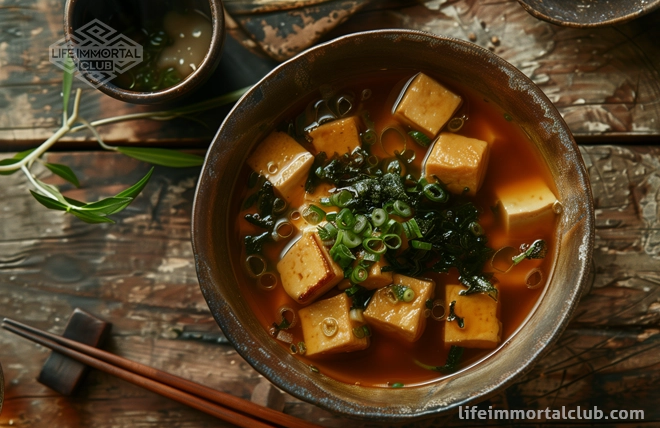Common Traits of Blue Zones

Key Take Aways:
- Plant-Based Diet: Emphasizes the significant health benefits of a diet rich in vegetables, fruits, and whole grains.
- Moderate Physical Activity: Highlights the importance of regular, moderate physical activities like walking and gardening.
- Community and Family: Stresses the role of strong social connections and family ties in promoting longevity.
- Stress Management: Discusses the importance of effective stress management techniques for a healthier life.
- Spirituality: Notes the impact of spiritual practices and beliefs on overall well-being and lifespan.
Useful Jump Menu:
- What are The Common Traits Found in People of Various "Blue Zones"
- List of Blue Zones
- Features of Blue Zones
- Diet
- Calorie Restriction
- Alcohol Consumption
- Physical Activity
- Purpose
- Community / Family
- Stress
- Spirituality
- Conclusion
What are The Common Traits Found in People of Various "Blue Zones"
Blue zones are regions of the world where people live exceptionally long and healthy lives. These areas have attracted significant attention from researchers and experts seeking to unravel the secrets behind longevity. From Okinawa, Japan, to Ikaria, Greece, and Nicoya Peninsula, Costa Rica, these blue zones offer valuable insights into common traits that contribute to a prolonged lifespan.
By examining various factors such as diet, lifestyle choices, community engagement, and stress management within these regions, we can gain a deeper understanding of how individuals are able to thrive well into their 100s. One of the most striking commonalities among blue zones is their distinctive dietary patterns.
The blue zone diet primarily consists of plant-based foods such as fruits, vegetables, legumes, and whole grains. Meat consumption is typically limited to small portions or reserved for special occasions.
Additionally, blue zone residents often incorporate moderate amounts of fish into their diets due to its omega-3 fatty acids content. This dietary approach emphasizes nutrient-rich meals with little processed or refined foods.
The high consumption of antioxidant-rich fruits and vegetables provides protection against chronic diseases commonly associated with aging. Another noteworthy aspect shared by blue zones is a culture that encourages calorie restriction without sacrificing essential nutrients.
Rather than overindulging in large portion sizes or calorie-dense meals as seen in many Western societies, individuals in blue zones practice moderation when it comes to food intake. They consume just enough calories to meet their body's needs while ensuring they receive adequate vitamins and minerals crucial for optimal health.
This controlled calorie consumption may help prevent obesity-related diseases such as diabetes and cardiovascular disorders that can significantly shorten life expectancy. Alcohol consumption also plays a role in the longevity observed in blue zones; however, it is not simply drinking alcohol that leads to increased lifespan but rather the manner in which it is consumed.
In these regions, alcohol is typically enjoyed moderately and as part of social gatherings rather than being used as a means of escapism or excessive indulgence. Red wine, in particular, is often favored for its potential heart-healthy benefits due to its high concentration of resveratrol, an antioxidant that may protect against cardiovascular diseases.
The blue zones offer valuable insights into the common traits shared by individuals who live exceptionally long and healthy lives. These regions demonstrate a strong correlation between diet, lifestyle choices, community engagement, and stress management.
By adopting a plant-based diet focused on nutrient-rich foods and practicing moderation in calorie intake and alcohol consumption, individuals can potentially increase their chances of living longer lives. However, it's important to remember that these findings are not a definitive blueprint but rather provide valuable guidelines to cultivate healthier habits for improved overall well-being.
List of Blue Zones
Blue zones are areas of the world where people tend to live significantly longer and healthier lives compared to the global average. These regions have attracted considerable attention from researchers, who aim to understand the factors contributing to their exceptional longevity.
As of now, there are five widely recognized blue zones: Ikaria in Greece, Nicoya in Costa Rica, Sardinia in Italy, Okinawa in Japan, and Loma Linda in California, United States. Ikaria, a small island located in the Aegean Sea, has gained recognition for its population's extraordinary longevity.
UPDATE: Singapore has been added to the list of Blue Zones in 2023!
Dubbed as "the island where people forget to die," Ikarians seem to evade many age-related diseases and often surpass the age of 90 or even 100 years old. Similarly, Nicoya Peninsula in Costa Rica boasts one of the highest concentrations of centenarians worldwide.
The region's inhabitants attribute their long lives to a combination of healthy lifestyle practices and social connections. Sardinia is home to some of the oldest living individuals on earth.
In particular, the mountainous region known as Barbagia stands out for its large population of centenarians. This Mediterranean island's vibrant culture and traditional diet have been linked to its residents' longevity.
Okinawa, an archipelago located south of mainland Japan, is renowned for having one of the highest life expectancies globally. The Okinawan diet plays a significant role here—rich in plant-based foods like sweet potatoes and legumes—with portion control being a common practice among its inhabitants.
Loma Linda stands out among blue zones due to its unique demographic—Seventh—day Adventists—who live about a decade longer than their fellow Americans on average. This community emphasizes vegetarianism and places great importance on physical activity and spiritual well-being.
Understanding these distinct regions helps shed light on how cultural practices and environmental factors contribute to human life expectancy. By examining each blue zone's characteristics, we can gain valuable insights into the various components that promote longevity and well-being.
Features of Blue Zones
Blue zones, commonly referred to as regions where individuals tend to live extraordinarily long and healthy lives, have garnered significant attention in recent years. These pockets of longevity are scattered across the globe and offer invaluable insights into the factors that contribute to human life expectancy.
By examining the unique characteristics of blue zones, we can gain a deeper understanding of what it takes to live a fulfilling and extended life. One prominent feature shared by blue zones around the world is their concentration of centenarians.
These remarkable individuals, often referred to as 100-year olds, defy conventional notions about aging by maintaining their vitality well into their golden years. Blue zones serve as vibrant hubs where such exceptional longevity can be observed with greater frequency than elsewhere in the world.
The presence of a significant number of centenarians within these areas underscores the importance of exploring their lifestyle choices and environmental factors that contribute to this extraordinary feat. When we map out blue zones around the world, intriguing patterns emerge.
It becomes apparent that these regions are located in diverse geographical locations ranging from Okinawa in Japan to Sardinia in Italy and Nicoya Peninsula in Costa Rica. This global dispersion indicates that there may be specific universal principles at play which transcend cultural boundaries when it comes to promoting health and longevity.
The existence of blue zones across continents suggests that there may be commonalities shared by these communities, irrespective of their different cultural backgrounds. While genetic factors undoubtedly play a role in determining lifespan, studies consistently highlight lifestyle choices as crucial determinants for increased life expectancy within blue zones.
One key aspect identified is diet - specifically, adhering to a predominantly plant-based diet rich in fruits, vegetables, whole grains, legumes, nuts, and seeds. Known as the "blue zone diet," this approach emphasizes consuming locally sourced ingredients while limiting processed foods and red meat consumption.
Moreover, physical activity is another prominent feature found within blue zones worldwide. Engaging in regular, low-intensity exercise such as walking, gardening, or performing daily household chores is commonplace in these regions.
The combination of a predominantly plant-based diet and daily physical activity helps individuals maintain healthy body weight, reduce the risk of chronic diseases, and support overall well-being. The features of blue zones encompass a significant concentration of centenarians and their geographical distribution across different continents.
These regions provide valuable insights into the lifestyle choices that can contribute to increased human life expectancy. By adopting a predominantly plant-based diet and incorporating regular physical activity into our daily lives, we can strive to emulate the longevity achieved by those living in blue zones.
Diet
It is well-known that diet plays a significant role in the longevity and overall health of individuals living in blue zones. Blue zones, as identified through extensive research conducted by Dan Buettner and his team, are regions around the world where people live exceptionally long and healthy lives. These blue zones include areas such as Ikaria in Greece, Okinawa in Japan, Sardinia in Italy, Nicoya Peninsula in Costa Rica, and Loma Linda in California.
In terms of diet, blue zone residents tend to follow a predominantly plant-based eating pattern. Their diets are rich in fruits, vegetables, whole grains, legumes, nuts, and seeds.
These foods provide essential nutrients such as vitamins, minerals, antioxidants, fiber, and phytochemicals that promote overall well-being. The blue zone diet is low in animal products such as meat and dairy but allows for occasional consumption.
One notable aspect of the blue zone diet is the emphasis on moderation when it comes to calorie intake. While it may seem counterintuitive to restrict calories for longevity purposes since humans typically associate food restriction with deprivation or lack of satisfaction – this approach has shown promising results among those living in blue zones.
Caloric restriction has been linked to enhanced cellular health and reduced risk factors for chronic diseases commonly associated with aging. Furthermore, alcohol consumption within the context of a balanced lifestyle appears to be a component of the blue zone dietary pattern.
However, it is worth noting that moderation is paramount; excessive alcohol intake can have detrimental effects on health. In certain blue zones like Sardinia and Ikaria specifically moderate consumption of red wine – which contains beneficial compounds like resveratrol –is often partaken during meals while enjoying social interactions with family or friends.
, the dietary patterns observed within various blue zones around the world exhibit commonalities that contribute to their exceptional longevity rates. The emphasis on plant-based nutrition with an abundance of fruits, vegetables, whole grains, legumes, nuts, and seeds provides a rich source of nutrients necessary for optimal health.
Additionally, practicing moderation in calorie intake and alcohol consumption further supports the well-being of those living in blue zones. By adopting these dietary principles and incorporating them into our own lives, we may increase our chances of living longer and healthier.
Calorie Restriction
Eating well is a key factor that contributes to the longevity seen in blue zones. In these regions, where an unusually high number of individuals reach the age of 100 and beyond, the inhabitants practice conscious calorie restriction as part of their daily lifestyle. It is important to note that calorie restriction does not mean starvation or deprivation; rather, it involves consuming a moderate amount of calories that aligns with the body's needs.
In blue zones, people typically consume fewer calories compared to those in other regions. This is often achieved by adopting a plant-based diet rich in fruits, vegetables, whole grains, legumes, and nuts.
These foods are nutrient-dense while being relatively low in calories. The emphasis on plant-based eating also means that animal products are limited or consumed sparingly.
The blue zone diet focuses on consuming smaller portion sizes and avoiding overeating. The meals are typically structured around whole foods and prepared using traditional cooking methods that preserve nutrients while reducing the need for excessive fats or oils.
This approach not only supports calorie control but also ensures a high intake of essential vitamins, minerals, antioxidants, and dietary fiber. Studies conducted in blue zones have found that practicing calorie restriction may have numerous health benefits beyond longevity.
Caloric restriction has been linked to weight management and reduced risk factors for chronic diseases such as cardiovascular disorders and diabetes. By consuming fewer calories overall while still meeting nutritional needs through nutrient-dense foods, individuals in blue zones maintain optimal health throughout their lives.
Ultimately, calorie restriction plays a significant role in the remarkable longevity observed within blue zones worldwide. The combination of limiting caloric intake through plant-based diets and ensuring adequate nutrition provides an effective strategy for achieving optimal health and promoting human life expectancy.
Alcohol Consumption
Alcohol is an intriguing aspect when examining the common traits of Blue Zones, as it reveals fascinating insights into the lifestyle choices adopted by individuals who live exceptionally long and healthy lives. In these regions, alcohol is often consumed regularly but in moderation.
The role of alcohol in Blue Zones varies from place to place, with some communities incorporating it into their daily routines while others reserve it for special occasions. Nonetheless, the consistent theme across all Blue Zones is that alcohol plays a minimal role in their overall lifestyle.
In Ikaria, one of the renowned Blue Zones located in Greece, moderate consumption of locally produced red wine is embraced as part of their traditional dietary habits. The wine is rich in antioxidants and polyphenols, which are believed to have cardiovascular benefits and contribute to longevity.
However, it's important to note that moderation is key here; excessive drinking can lead to adverse health effects and should be avoided. Similarly, Sardinia - another region famous for its high concentration of centenarians - has its own unique approach to alcohol consumption.
The traditional alcoholic beverage called "cannonau" (a form of red wine) has gained recognition for its potential health benefits due to its high levels of flavonoids and other protective compounds. Again, moderation remains integral to their culture's understanding of alcohol consumption.
Contrastingly, the Nicoya Peninsula in Costa Rica shows a less significant emphasis on alcohol intake amongst its residents compared to other Blue Zones. The population here tends to prioritize fresh fruit juices and herbal teas instead.
It's worth noting that their longevity may be attributed more directly to other lifestyle factors such as diet or physical activity rather than alcohol consumption. When examining the relationship between alcohol consumption and longevity in Blue Zones around the world, moderation emerges as a recurring theme.
While some regions incorporate moderate amounts of specific types of alcoholic beverages into their daily routines due to potential health benefits associated with them, others focus on alternative beverages or simply limit their alcohol intake. Ultimately, the key takeaway is that balance and moderation in all aspects of life, including alcohol consumption, seem to be paramount in the quest for a long and healthy existence in these extraordinary regions.
Physical Activity
Staying Active plays a crucial role in the longevity and well-being of individuals residing in Blue Zones. Regular physical activity has been found to be a consistent characteristic among centenarians in these regions, contributing to their remarkable health and extended lifespans.
In Blue Zones, individuals engage in various forms of physical activity that integrate seamlessly into their daily lives. Walking is one of the most common forms of physical activity observed among inhabitants of Blue Zones.
Rather than relying heavily on modern transportation options, such as cars or buses, people living in these areas prefer walking as a primary mode of transportation. Walking not only provides an opportunity for exercise but also fosters social connections within the community.
It is common to see individuals walking together, engaging in conversations and forming strong bonds while improving their overall fitness. Gardening is another prevalent form of physical activity among the residents of Blue Zones.
Cultivating one's own vegetables not only promotes a nutrient-rich diet but also requires regular movement and manual labor. Tending to gardens involves activities such as digging, planting, weeding, and harvesting, which provide an excellent workout for the body.
This combination of physical exertion and exposure to fresh air contributes to improved health outcomes in these regions. Engagement in traditional activities is also significant within Blue Zones communities.
These activities often involve manual labor or physically demanding tasks that keep individuals active throughout their lives. For instance, participating in farming practices or artisan crafts necessitates constant movement and strength-building exercises.
By incorporating physically demanding tasks into their daily routines, individuals living in Blue Zones naturally maintain robust physical health well into old age. Regular physical activity is an essential component contributing to the exceptional health outcomes observed within Blue Zones populations worldwide.
The prevalence of walking as a means of transportation along with participation in gardening and engagement with traditional activities highlight how these communities prioritize movement throughout their lives. By integrating physical activity seamlessly into daily routines, individuals within Blue Zones foster longevity, enjoy improved overall fitness, and create a foundation for well-being that enables them to live vibrant lives well into their 100s.
Purpose
plays a crucial role in the lives of individuals residing in blue zones. People in these regions have a clear sense of purpose, which drives them to lead fulfilling and meaningful lives. The notion of purpose is deeply ingrained in their daily activities, guiding their decisions and actions.
Whether it's tending to their fields, taking care of their families, or contributing to their communities, having a sense of purpose gives them a strong sense of direction and fulfillment. In blue zones, individuals often find purpose through work or hobbies that provide them with a sense of accomplishment and satisfaction.
Many engage in traditional occupations such as farming, where they can directly see the fruits of their labor and contribute to both their own sustenance and the well-being of others in the community. This connection to meaningful work not only provides financial stability but also instills a deep sense of pride and fulfillment.
Additionally, family plays an essential role in establishing purpose within blue zones. The bonds created within strong familial networks provide individuals with a profound motivation to care for one another across generations.
Elderly members are respected for their wisdom and experiences, which fosters intergenerational relationships that uphold values, traditions, and responsibilities. This interconnectedness reinforces the importance of family ties as a source of support and purpose throughout one's life.
Furthermore, community engagement is another avenue through which people find purpose within blue zones. Active participation in communal activities such as religious ceremonies or group celebrations strengthens social connections while offering individuals opportunities to serve others within their community.
Through collective rituals or acts of kindness towards fellow community members, individuals experience a profound sense of belongingness that further enhances their overall well-being. Having a clear sense of purpose is an integral aspect prevalent among those residing in blue zones worldwide.
It serves as a guiding force that influences various aspects of life - from work to family dynamics to community involvement - fostering personal satisfaction and fulfillment while contributing positively to overall well-being. By understanding and embracing the significance of purpose, individuals can cultivate a more meaningful existence, echoing the values and practices observed in blue zones across the globe.
Community / Family
One of the key factors contributing to the remarkable longevity found in blue zones is the strong sense of community and tight-knit family structures. In these regions, individuals are deeply embedded in supportive social networks that provide a sense of belonging, purpose, and security throughout their lives.
The power of community and family ties plays a significant role in promoting health and well-being among the inhabitants of blue zones. Within blue zone communities, it is common to observe multigenerational households where grandparents live with their children and grandchildren under one roof.
This intergenerational living arrangement fosters close relationships between family members and creates a natural support system for older individuals. The wisdom and experience shared by older generations are highly valued, providing guidance for younger family members as they navigate life's challenges.
This communal living arrangement also ensures that the elderly receive care and assistance when needed, reducing feelings of isolation or neglect. In addition to familial connections, blue zone communities emphasize a strong sense of social integration by promoting cooperation, collaboration, and mutual support among neighbors and friends.
People in these areas regularly engage in social activities together, whether it be participating in community events or simply gathering to share meals or stories. The bonds forged through such interactions contribute to increased happiness levels and reduced stress levels among community members.
Studies have shown that individuals with robust social ties experience lower rates of chronic diseases such as heart disease or depression compared to those who feel socially isolated. Furthermore, blue zone communities prioritize interdependence rather than individualism.
There is a collective mindset where people look out for each other's well-being instead of solely focusing on personal achievements or success. This interconnectedness cultivates a sense of purpose beyond oneself - an understanding that actions have ripple effects within the larger network of relationships.
By placing importance on communal values rather than individual desires, blue zone inhabitants create an environment conducive to overall health and longevity. Community cohesion and strong family bonds are essential components contributing to the exceptional longevity observed in blue zones.
The close-knit relationships established within these regions provide emotional support, foster a sense of purpose, and ensure the well-being of individuals throughout their lives. By prioritizing social connections and collective well-being over individualism, blue zone communities create environments that promote health, happiness, and longevity for all.
Stress
In the fast-paced world we live in today, stress has become a pervasive issue that negatively impacts our overall well-being.
However, when we delve into the study of blue zones, those regions around the world where people live significantly longer and healthier lives, we find that stress management plays a crucial role in their longevity. Unlike many modern societies where stress is seen as an unavoidable part of life, blue zones have established practices and lifestyle choices that actively mitigate this silent killer.
One key aspect of stress reduction in blue zones is their emphasis on relaxation techniques. These regions have a deep-rooted culture of taking regular breaks throughout the day to unwind and de-stress.
Whether it's through meditation, prayer, or simply spending time in nature, blue zone inhabitants are committed to finding moments of peace amidst the chaos. This intentional approach to stress reduction not only helps them improve their mental well-being but also reduces the harmful physiological effects that chronic stress can have on the body.
Moreover, community support plays a pivotal role in managing stress levels within blue zones. Social networks are deeply ingrained in these regions as individuals rely on one another for emotional support during challenging times.
This strong sense of community acts as a buffer against stressful situations by fostering connections and providing outlets for sharing burdens. Whether it's through regular social gatherings or informal support systems within families and neighborhoods, blue zone inhabitants recognize the importance of cultivating strong social ties as a means to combat stress.
Furthermore, physical activity plays an integral part in reducing stress levels within blue zones. Engaging in regular exercise not only promotes physical fitness but also releases endorphins - natural mood-lifting chemicals - which alleviate symptoms of stress and anxiety.
The inhabitants of these regions prioritize movement throughout their daily routines; they walk or bike instead of driving short distances and engage in activities like gardening or farming that keep them physically active without feeling burdened by formal exercise routines. Understanding how blue zones effectively manage stress can provide valuable insights for individuals striving to improve their overall well-being and increase their life expectancy.
By incorporating relaxation techniques, building strong social connections, and prioritizing physical activity, we can adopt practices from these blue zones to mitigate the harmful effects of stress in our own lives. It is through such intentional and holistic approaches that we can strive towards a healthier and more fulfilling existence, inching closer to the secret behind the longevity observed in these exceptional regions of the world.
Spirituality
Spirituality In examining the common traits of Blue Zones, one cannot overlook the role of spirituality in fostering longevity and well-being.
, in this context, refers to a deep sense of purpose and connection to something greater than oneself. It is an intrinsic part of the daily lives of individuals residing in Blue Zones.
One noteworthy aspect of spirituality in Blue Zones is the emphasis on daily rituals and practices that promote inner peace and contemplation. This can take various forms depending on the cultural and religious background of each zone.
For instance, in Okinawa, Japan – one of the renowned Blue Zones – residents practice ancestor veneration as a way to honor their lineage and find solace in their roots. Similarly, individuals living in Sardinia, Italy engage in regular prayer and participation within their faith communities.
The influence of spirituality extends beyond religious practices alone; it encompasses a broader sense of connectedness with nature and the universe as a whole. In Nicoya Peninsula, Costa Rica – another Blue Zone hotspot – residents often engage in mindfulness activities such as meditation or spending time outdoors surrounded by nature’s splendor.
This deep-rooted appreciation for the natural world fosters a profound sense of spiritual well-being among individuals living there. Moreover, spiritual beliefs often serve as sources of resilience during challenging times.
In Ikaria, Greece – known for its high concentration of centenarians – locals attribute their longevity to their unwavering faith and belief systems that provide them with a sense of hope and purpose throughout all stages of life. Spirituality plays an integral role within Blue Zones by providing individuals with a profound sense of purpose, connectedness to others, and harmony with nature.
By nurturing their spirits through daily rituals or cultivating an unwavering faith system, people residing in these regions find solace amidst life's challenges while enhancing overall well-being. (Note: Phrases from prompt included - blue zones map; blue zones; blue zones diet; blue zones in the world; live to 100)
Conclusion
The exploration of blue zones has shed light on several remarkable commonalities that contribute to the longevity and well-being of their inhabitants.
These regions, scattered across the globe, have provided invaluable insights into how we can enhance our own lives and potentially increase our life expectancy. One of the striking findings is the significance of maintaining a healthy diet.
The Blue Zone diet, which emphasizes plant-based foods such as vegetables, fruits, legumes, and whole grains while moderating meat consumption, has shown promising results in promoting longevity. Incorporating this dietary pattern could prove to be beneficial for individuals striving to live longer and healthier lives.
Another notable factor among blue zone populations is their adherence to an active lifestyle. Regular physical activity has proven to be a critical component in reducing the risk of chronic diseases and enhancing overall well-being.
Engaging in moderate-intensity exercises such as walking, gardening, or cycling not only improves physical health but also fosters a sense of community within these regions. The emphasis on cultivating strong social connections appears to play a pivotal role in supporting longevity as well.
Blue zone communities prioritize spending quality time with family and friends, fostering deep connections and providing emotional support. While there are several key factors that contribute to the blue zones' exceptional health outcomes, it is important to recognize that replicating these exact conditions may not be feasible for everyone.
However, incorporating elements from the blue zone lifestyle can positively influence our own well-being and potentially add years to our lives. By adopting healthier eating habits inspired by the Blue Zone diet, prioritizing regular physical activity in our daily routines, nurturing strong social connections with loved ones and communities around us while minimizing stress levels - we can strive towards leading fulfilling lives with improved overall health outcomes.
Ultimately, exploring blue zones offers valuable insights into how we can optimize our lifestyles for increased happiness and longevity. While there may not be a one-size-fits-all solution for achieving centenarian status, the lessons derived from these exceptional regions provide a roadmap for potential improvements in our own lives.
By incorporating the wisdom of blue zones and embracing their core principles, we can cultivate healthier habits, forge stronger bonds within our communities, and ultimately enhance the quality of our existence. So let us take inspiration from the blue zones of the world and embark on a journey towards living our best lives, with the hope of not only reaching 100 years but thriving throughout every precious moment.







